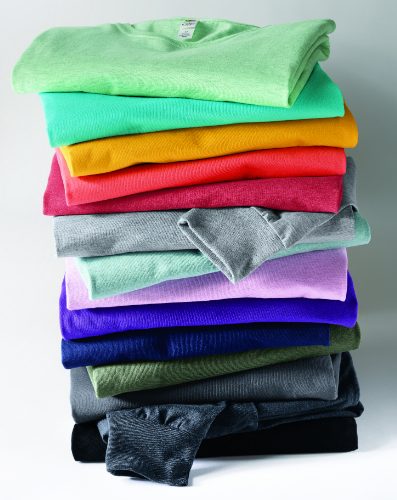
Obviously, not all t-shirts are the same and the different attributes of one t-shirt can make it the perfect candidate for wholesale t-shirt orders. Knowing the differences between mainstays like Fruit of the Loom t-shirts and Jerzees t-shirts helps buyers make the right choice for whatever they have in mind going forward.
A Closer Look at T-Shirt Fabrication
Fabrication is the process to manufacture a particular shirt and varies widely from one designer to the next. Most t-shirts are jersey knit and hold two key measurements - yarn gauge and singles count. Yarn gauge is how wide the yarn is and singles tells you the yarn count. With higher singles count, the finer the yarn will be; the finer the yarn, the softer the t-shirt.
Stitch density is also a good measure to know as the more dense it is, the easier it is to print on. For example, the Fruit of the Loom 3930R HD Cotton T-Shirt is purposefully dense to be really easy to print on.
Why T-Shirt Construction Matters
Different materials will yield different results. As a general rule, cotton t-shirts are great for screen printing, Direct-to-Garment (DTG), or even embroidery. Cotton-poly blend t-shirts like the Jerzees 29M Dri-Power 50/50 T-Shirt wick moisture and have a soft hand feel.
When to Use What Weight
Lightweight t-shirts (< 5oz.) are comfortable but require more work to maintain.
Midweight t-shirts (5-6oz.) will print and decorate well, provide great coverage, and also hold up to washing well.
Heavy weights (> 6oz.) will decorate well and are more durable but wouldn’t be as suitable as a lighter weight t-shirt for working outside on a hot summer day.

New comment
Comments